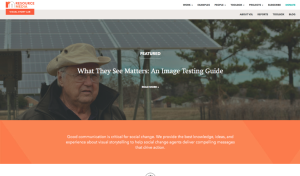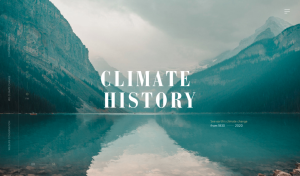 |
September 24, 2021 Volume 27, Number 38 |
General Interest |
Theme: History of Los Angeles |
Revisited |
In the News |
General InterestBack to Top | |
 |
|
 |
|
 |
|
 |
|
 |
|
Theme: History of Los AngelesBack to Top | |
 |
|
 |
|
 |
|
 |
|
 |
|
RevisitedBack to Top | |
 |
|
In the NewsBack to Top | |
Understanding "Fire Tornadoes" and their Link to Climate Change | |
|
Scientists Are Learning More About Fire Tornadoes, The Spinning Funnels Of Flame https://www.npr.org/2021/08/23/1029638870/fire-tornadoes-scientists-funnels-flames Can Scientists Predict Fire Tornadoes? https://www.scientificamerican.com/article/can-scientists-predict-fire-tornadoes/ Can a tornado be made out of fire? https://www.loc.gov/everyday-mysteries/meteorology-climatology/item/can-a-tornado-be-made-out-of-fire/ What exactly is a "fire tornado"? https://news.harvard.edu/gazette/story/2021/07/harvard-researcher-examines-a-fire-tornado/ Fire Whirl Research https://www.firelab.org/project/fire-whirl-research The Carr Fire Vortex: A Case of Pyrotornadogenesis? https://www.spc.noaa.gov/publications/nauslar/Lareau_et_al-2018-Geophysical_Research_Letters.pdf Climate change can drive stronger hurricanes and more intense wildfires, perhaps causing phenomena such as "fire tornadoes" to become more common and widespread. A fire tornado is a proportionally larger version of a "fire whirl" - a funnel of heated, rotating air. Also known as pyrogenetic tornadoes due to their means of formation, fire tornadoes are exceedingly rare, associated only with the most extreme wildfires. Yet fire tornadoes are also very dangerous because of their ability to accelerate and amplify wildfires due to high winds, such as the 143 mile per hour winds generated by a fire tornado during the 2018 Carr Fire in California; and because fire tornadoes may be able to generate their own weather, including pyro-cumulonimbus clouds that produce thunderstorms. Scientists are trying to learn more about fire whirls and their larger cousins, including generating fire whirls under laboratory conditions to understand their formation, and gathering real world data to assess whether phenomena like fire tornados are becoming more common or just more commonly documented due to the prevalence of smartphone cameras. In the first link, visitors can listen to an NPR news segment discussing a viral video of a 2021 fire tornado generated in California's Tennant Fire and hear from Jason Forthofer, a firefighter and researcher with the U.S. Forest Service who studies such phenomena. Readers can click the second link for an article by Forthofer in Scientific American, where he writes about research into the Carr Fire tornado and what scientists are doing to understand the physics of fire tornadoes. The third link from the Library of Congress features an overview of key terminology such as fire whirl, fire tornado, firestorm, and fire devil, as well as highlighting historical occurrences of fire tornadoes, such as the Great Peshtigo Fire that occurred in Wisconsin in 1871. In the fourth link from The Harvard Gazette, visitors can read an interview with Loretta Mickley, a research fellow in chemistry-climate interactions who discusses the role of climate change in driving massive wildfires and fire tornadoes in the Western U.S. The fifth link from the U.S. Forest Service summarizes existing research into fire whirls and offers recommendations for firefighter safety in such situations. The final link is to a research article from Geophysical Research Letters, which relates researchers' use of satellite imagery and radar observations to document similarities between the dynamics of tornadoes and those present in the Carr Fire vortex. [MJZ] | |





